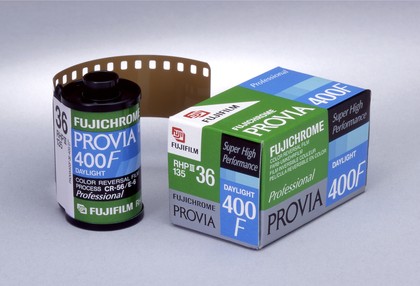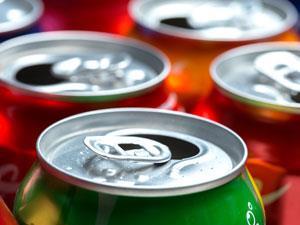Bromine is popularly used to disinfect cooling towers and swimming pool water, killing all the waterborne pathogens. It is also used as a flame retardant and added to different polymers to make them less flammable. Keep reading the article to learn more interesting and surprising uses of bromine.
Uses of Bromine
1. Flame Retardant
One of the largest commercial uses of bromine is to manufacture brominated flame retardants (BFRs), which are the mixtures of chemicals added to different products to make them less flammable. Around 20% of the commercially available flame retardants contain bromine. When the BFR containing material burns, the BFR produces hydrobromic acid, which restricts the oxidation reaction of fire. The mechanism of BFRs function is that the highly reactive radical species like hydroxyl radical or oxygen radical react with the hydrobromic acid and produce less reactive free bromine atoms (or bromine radicals). These bromine radicals react with some other radicals and stop the free radical chain-reactions that occur during combustion. BFRs are added to textiles, plastics, and electronic devices to make them flame retardant. They are usually incorporated into these elements during their manufacturing process.
2. Water Disinfection
Bromine is a strong disinfectant. Therefore, it is used as an alternative for chlorine in swimming pools and spas to disinfect water and remove bacteria, viruses, fungi, and other microbes from it. During World War ll, when chlorine became limited, bromine was used in its places to clean swimming pools. Bromine can be used in solid or liquid form to disinfect water. When added in the liquid form, it shows the following reactions in the water. Br2 + 2H2O —–> HOBr + H3O+ + Br- HOBr + 2H2O —-> OBr- + H3O- Bromine forms hypobromous acid (HOBr) in the water, which acts as a disinfectant and kills waterborne pathogens. Despite the ability to purify water, bromine is not allowed to be used for treating drinking water. It is mainly due to two reasons. First, it is expensive compared to other disinfectants. Second, it produces brominated disinfection byproducts (DBPs), which are carcinogenic (cancer-causing) in nature. It also gives water a medicine-like taste. Therefore, bromine should only be used to treat swimming pool water. Use it for drinking water purification only in emergency situations.
3. Photography film
Bromine is used in the film industry due to its photo-sensitivity. Silver bromide (AgBr) is a water-insoluble salt that shows unusual sensitivity to light. It is applied to photography films to make sure they receive enough light. It was used for the development of photographs for the first time in 1874 by J. Johnston and W.B. Bolton. Light is needed for an image to be developed in photography films. When grains of silver bromide get exposed to light, they create a latent image on the photographic film. This image is transformed into a visual image with the help of a chemical procedure. Without silver bromide, the image would not be sharp enough, or it may come out distorted. Potassium bromide is also used during this process. It prevents silver reduction, which can cause fogging in an image.
4. Emulsify Soft Drinks
Brominated vegetable oil (BVO) is added to citrus-flavored soft drinks as an emulsifier. These drinks contain citrus flavors that are oily in nature. Therefore, they do not disperse in the drink completely and sit on top of it. So, this is where BVO comes to help. It makes sure citrus flavors stay mixed in the drink and do not separate out after some time. BVO is used in many popular drinks, including Mountain Dew Throwback, Mountain Lighting, and Clover Valley. However, know that BVO is a controversial food additive. It has been banned in Europe, India, and Japan because many studies show that it can produce toxic effects on the body when consumed regularly. Due to these effects of BVO, PepsiCo. and Coca-Cola stated in 2014 that they would not add BVO in their products anymore.
5. Agriculture sector
Bromine compounds have long been used to kill the soil and stored grains pests. 1,2 dibromoethane (EDB) was the first bromine-containing compound used in 1925 to kill pests from the stored grains. However, it was banned to be used as a pesticide when research showed its carcinogenic effects. Methyl bromide, another pesticide, replaced it in 1932, and it has since been used as a pesticide in many countries. Methyl bromide is a non-flammable, odorless gas that is used as a fumigant. It reacts with the SH group of proteins and retard a cell’s performance. Protein SH + CH3Br → Protein S-CH3 + HBr Some countries have also banned its use after finding out that it may deplete ozone. Many other bromine-containing compounds, which are in the form of ready-to-use liquids or solid soluble concentrates, are also used in the agriculture sector to protect plants and stored grains from the damaging effects of pests.
6. Pharmacology
Bromine has several pharmacological uses as well. You can find it in: • Tranquilisers (drugs designed to reduce tension, anxiety, and stress) • Sedatives (drugs that slow down brain activity and may induce sleep) • Anti-epileptics (that treat epileptic seizures) • Over-the-counter and prescription drugs Bromine also acts as a catalyst during drug production processes. For example, it is used to accelerate the reaction of octyl methoxycinnamate synthesis, which is a sunscreen component. Bromine works by increasing the rate of reaction and reducing energy intensity.
7. Manufacture Organic and Inorganic Compounds
Bromine is widely used to manufacture several important organic and inorganic products. Some examples of these compounds are: Ammonium bromide (NH4Br): Used in photography films, papers, plastics, and pharmaceutical products. 8NH3 + 3Br2 —> 6NH4Br + N2 Sodium bromide (NaBr): Used as a sedative, germicide, detergent, and antiseptic. Na + Br2 —> NaBr Silver bromide (AgBr): Used during the formation of photography films and plates. AgNO3 + KBr → AgBr+ KNO3 Dibromomethane (CH2Br): Used to manufacture agrochemicals, fragrances, and pharmaceuticals. CH3OH + H2O → H2 + CO2 H2 + Br2 → HBr CH2Cl 2 + HBr → CH2BrCl + HCl CH2BrCl + HBr → CH 2Br2 + HCl
8. Batteries
Bromine is used in different energy applications as well. Bromine-based storage batteries are very cost-effective and efficient, providing different options to use renewable energy sources and manage energy. Typical examples of bromine batteries are zinc-bromine (ZnBr2) and hydrogen bromide (HBr). They are usually used for grids and backup storage.
9. Reduce Mercury Emission
Mercury, also called quicksilver, produces many toxic effects in humans and animals when they are exposed to its higher concentrations. That is why the United Nations’ Minamata Convention encourages countries to reduce the emission of mercury from their power plants and factories. Many power plants use coal as a source of heat energy. When burnt, coal produces different air pollutants, and one of them may be mercury. It can be released in three different forms, which include oxidized mercury (Hg2+), particulate mercury (Hg P), and elemental mercury (Hg). Except for elemental mercury, other forms of mercury are captured at combustion temperatures. However, to capture elemental mercury, bromide additives are used. They transform elemental mercury into its oxidized forms, which are then retrieved using emission control equipment.
10. Drilling fluid
Bromine is added to drilling fluids when extracting oils and other products from wells. Drilling fluid, also called drilling mud, is a mixture of different elements that are used during the gas or oil drilling operations to lubricate the drill bit and carry rocks to the surface. Bromine-based drilling fluids are eco-friendly and less corrosive to drilling tools. They also help increase the rate of penetration and enhance the productivity of the overall drilling process.
11. Rubber
Bromine has been used to manufacture rubber for decades. Bromobutyl rubber is formed by mixing bromine and butyl rubber. Bromine increases the value of butyl rubber in multiple ways. It increases its ability to adhere to metals, stay stable at high temperatures, and be resistant to weather, shock, and age. It is used to manufacture a variety of daily use products such as engine mounts, conveyor belts, seals, hoses, and tank linings.
Properties of Bromine
It is the third-largest halogen that was discovered in 1826 by two scientists independently. Its atomic number is 35, and it has around 10 isotopes, of which 79Br and 81Br are the most stable and abundant bromine isotopes. It shows five oxidation states which include −1, +1, +3, +5, and +7. Bromine is a rare element that is dispersed throughout Earth’s crust. In its gaseous form, it is toxic, as exposure to high concentrations of bromine gas (only for a short time) can cause death.
Related posts you must read Uses of Palladium Uses of Barium Uses of SIlicon Uses of Lithium Uses of Argon Uses of Neon Uses of Helium Uses of Ammonia Uses of Chlorine
Physical Properties
• Its melting point is −7.2°C. • Its boiling point is 58.8°C. • Its density is 3.1028 g cm−3. • At room temperature, it exists as a liquid. • It has a pungent smell, and it irritates eyes, respiratory tract, and skin when they are exposed to it.
Chemical Properties
• It reacts with water and forms hypobromite. • It vigorously reacts with many metals. • It does not react with oxygen and nitrogen present in the atmosphere. However, it readily reacts with ozone.
Summary
The bromine element was discovered around two centuries ago. Since then, it has been used in different forms. Today, you can find bromine in pesticides that kill pests present in the soil as well as stored grains. You can also find it in plastics, rubbers, polymers, drugs, and drilling fluids. Due to its photo-sensitivity, it is used to create photography films. Several beneficial organic and inorganic compounds are also manufactured from bromine.





